In the early 1900s the land area around the Northeast Branch Library at 6801 35th Ave NE was owned by Marvin & Isabella Jones, who wanted to share their wealth by giving portions of their land for use of charities and community organizations.
Although Mr. & Mrs. Jones were no longer living by the time that the library opened in 1954, if they had been living they would have been glad to see the establishment of such a wonderful neighborhood resource as a library.
This blog post will tell about the creation of the Northeast Branch Library and what the area was like before the library, in the early 1900s during the land ownership of Marvin & Isabella Jones.
Early libraries in northeast Seattle
The residents of northeast Seattle have always been avid readers, as evidenced by their early efforts to have a library in the neighborhood. The first, called Ravenna Station in the 1920s, did not have librarians or any other staff. It was a book collection housed in Bell’s Drug Store at 2818 NE 55th Street, pictured below. The storekeeper was paid a penny for every book checked out, by way of “rental” of his space. During the economic depression of the 1930s the Ravenna Station closed because the City could not afford to pay the “rent.”
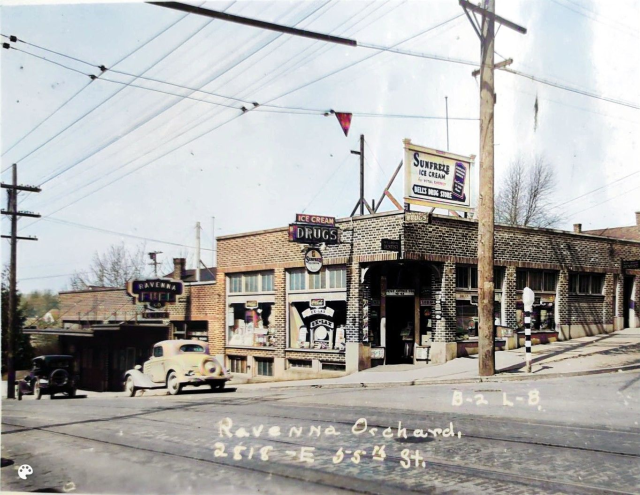
Bell’s Drugstore built 1924 at 2818 NE 55th Street, shown here in a property tax assessors photo of 1937. In the 1920s the store was a book lending library.
The next Ravenna Station library, pictured below, opened in September 1945 in a storefront building in the 3200 block on the south side of NE 65th Street (present site of the Assumption School gym). At first it was only open three days per week. This storefront library branch had childrens books and the librarians commented that as many as 200 children would come into the Ravenna Station Library in a single day.
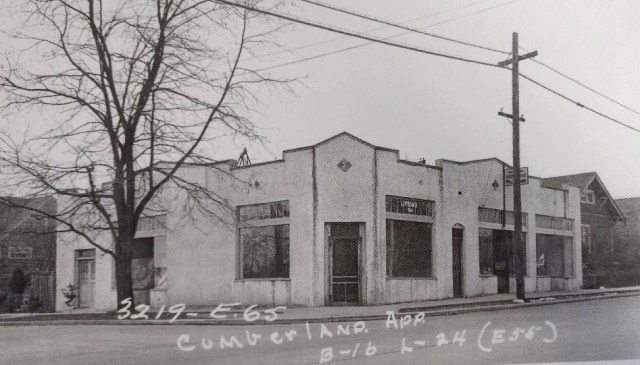
Storefront building at 3219 NE 65th Street, on the south side of NE 65th Street. The building is not there any more because Assumption School has expanded up to NE 65th Street.
1950s momentum for a new library building for northeast Seattle
By the 1950s Seattle had twelve branch libraries around the city, including the University District and Green Lake, but no library building to serve the growing population of the areas east of the University District all the way over to Lake Washington. There was still a lot of difficulty with finding the money for a new library, as the bond issue for it had not gotten enough votes in 1950.
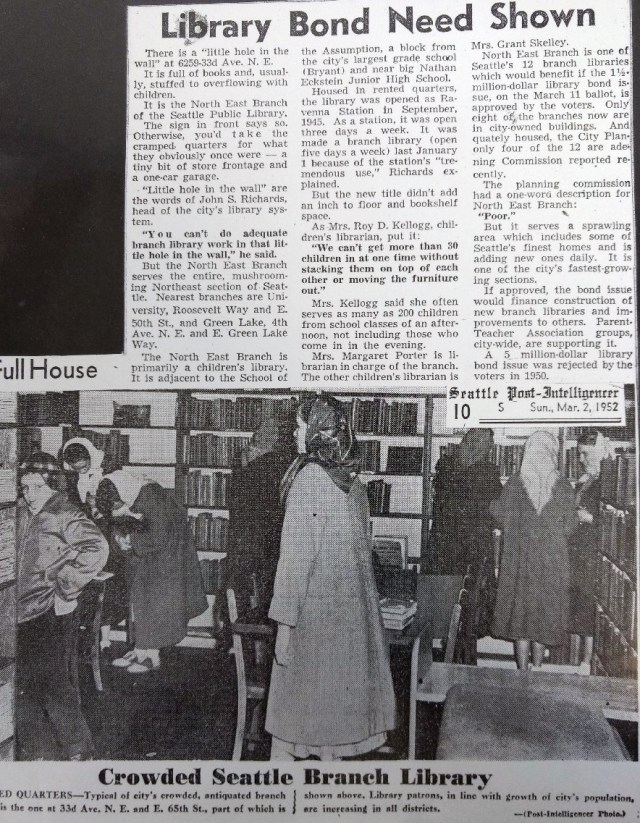
The need of a larger library in northeast Seattle was featured in this article in the Seattle Post-Intelligencer newspaper on March 2, 1952. This article is in the historical scrapbook of the Northeast Branch Library.
In addition to funding, another difficulty was to locate an appropriate site for a new library building in northeast Seattle. What was wanted was a centrally-located space to serve the residents of Bryant, Hawthorne Hills, Laurelhurst, Ravenna, Sand Point, View Ridge and Wedgwood. It was found that sites cost more if located in commercial districts like NE 65th Street.
Volunteers fanned out and went door-to-door looking for information about available sites for a new library building. Finally an available lot was identified on 35th Ave NE at NE 68th Street. It was on the arterial 35th Ave NE which would mean good access for library patrons even though the area around that corner of NE 68th Street was residential, rather than commercial.
The corner of NE 68th Street was not too far from Bryant School at 3311 NE 60th Street and Assumption School on NE 65th Street, whose children were enthusiastic library users. There was a new View Ridge School to the east of the arterial, and Eckstein Junior High on NE 75th Street. Other potential library patrons would come from the Seattle Children’s Home at 3200 NE 65th Street and the the Theodora Home at 6559 35th Ave NE.
Design of the new Northeast Branch Library
The architect chosen to design the new Northeast Branch Library building was Paul Thiry, known as “the father of Pacific Northwest Modernism.” Modernism in architectural design was of clean lines and shapes of buildings without any external applied decoration. Thiry designed the library to be constructed with a steel column and girder system, which eliminated the need for interior supporting columns. The interior space of the library is of large open bays.
One of Paul Thiry’s design principles was that a building should be in harmony with its site. He noted how residential the surrounding neighborhood was, so part of his design scheme for the Northeast Branch Library was to make the new building blend in and look like a house. The landscaping around the building was part of the design, as well, to make the building look like part of the natural environment.
Thiry’s architectural design for the library had a low-pitched roof and was single-story, giving the building a “rambler” appearance like many 1950s houses in northeast Seattle.
The library entrance was placed on the corner so that it was level-entry accessible from NE 68th Street. The low-pitched roof, large windows, open spaces and accessible entry looked very different from Seattle libraries built in earlier eras, such as the University Branch. The University Branch Library was designed in classical style and had a long flight of stairs to entry.
Previous land owners: Marvin & Isabella Jones
By the time that the new Northeast Branch Library opened in 1954, the previous land owners had been gone for quite a few years and it was a different landowner who had sold the site to the library. But even in the 1950s the blocks around the library still bore the stamp of the activities of Marvin & Isabella Jones of early in the 1900s.
Marvin F. Jones was born in 1838 in New York. As a young man he began a westward journey which would finally bring him to Seattle in the 1890s.
In the 1860s Marvin Jones joined a wagon train out to Oregon where he worked as a teacher and attorney. In the 1870s Jones moved to Walla Walla, Washington, where he practiced law and also became very successful in land developments. Although he retained some of his investments in Walla Walla, Jones suddenly moved to Seattle in 1893. Perhaps he had decided that the City of Seattle had brighter prospects for business. The economic depression of the year 1893 had hit Seattle very, very hard and perhaps Jones thought that it was a good time to acquire properties at reduced prices.
The Ravenna farm of Marvin & Isabella Jones
Marvin Jones married for the first time at age 55 in the 1890s in Seattle, and he and his new wife Isabella moved to the property which they called their farm, on the outskirts of the Ravenna neighborhood.
Beginning in 1888, land investor W.W. Beck had begun promoting the development of a community near the Ravenna stop on the Seattle, Lake Shore & Eastern Railroad (today’s Burke-Gilman Trail).
A portion of Ravenna south of NE 65th Street was annexed to the City of Seattle in 1907. The property of Marvin & Isabella Jones was to the north, outside of the City Limits, between NE 65th to 70th Streets, 30th to 35th Avenues NE.
The farmer becomes a philanthropist
Marvin Jones called himself a “farmer” because he was semi-retired and liked to grow things on his land, especially apple trees, but his actual income was in business investments. He turned 70 in 1908 and he then stated his desire to share his wealth in charitable causes. In that era there was no social safety net except for charitable organizations which were privately funded. The first group that Marvin Jones helped was the Washington Childrens Home Society, which established their site at 3200 NE 65th Street in 1908. Some of the children were orphans and others had a single parent who needed help with the care of the family.
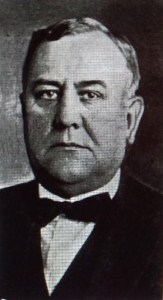
Judge King Dykeman came to Seattle as a sixteen-year-old orphan in 1890. He became the first judge in the new juvenile justice system.
In the early 1900s a coalition of Seattle attorneys and judges worked to get a state law passed for the first juvenile justice system. This law allowed for children and teens to be taken into protective custody if they were found to be abused, neglected, homeless, begging on the streets, shoplifting for food or being used by adults for criminal purposes such as pickpocket gangs.
One of the proponents of the new juvenile justice legislation was attorney Everett Smith, executor of the wills of Mr. & Mrs. B.F. Day of Fremont in Seattle. After the deaths of Mr. & Mrs. Day, Smith donated their house to be a refuge home for girls.
Another promoter of the juvenile justice law was Judge King Dykeman who with his daughter Ruth helped sponsor the Ruth Home for Girls. This home, operated by a charitable organization, gave the judge a place to send teenage girls other than jail. The Ruth Home, on land donated by Marvin Jones, was at 3404 NE 68th Street from 1921 until 1933 when it moved to Burien. The Ruth Home operated continuously until 2010 when it merged with Navos.
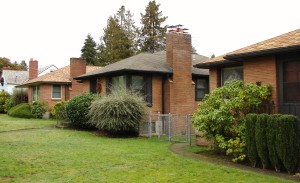
The corner of 34th Ave NE at NE 68th Street now has these three brick houses built in 1948, on the former site of the Ruth School.
By the time of Marvin Jones’ death in 1917, the land he owned hosted three charitable institutions: the Seattle Children’s Home at 3200 NE 65th Street; the Theodora Home for widows, mothers and children at 6559 35th Ave NE; and the school for teenage girls at 3404 NE 68th Street (used by two different organizations over time, the Martha Washington School and the Ruth School — see source list at the end of this article.) The former site of the girls school, the corner of 34th & 68th, now has houses built in 1948.
The widow becomes a developer
Marvin & Isabella Jones owned forty acres from 30th to 35th Avenues NE, NE 65th to 70th Streets, which is a five-block square. Before Marvin Jones died in 1917 he had given away land sections to the above three charities, but the rest of his property was still available with no other houses on it except his own. Isabella was 25 years younger than her husband and, widowed at age 55, Isabella began platting her land marked out with lots to sell, where houses would be built.
The Roosevelt Heights plats: First and Second Additions
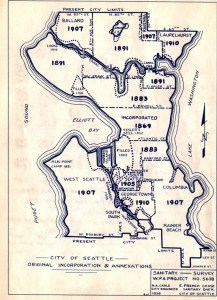
A 1938 Seattle Engineering Department map of the city showing the annexations dates of different neighborhoods. A “jog” can be seen at the northeast corner where the City Limits were at NE 65th Street as of 1910. Map from the Seattle Municipal Archives Record Series 2616-03.
A “plat” is any area of land which has been marked out with streets and lots so that people can buy sites for houses or other buildings. Isabella Jones filed the first plat, called Roosevelt Heights, in 1919. It included only the western portion of her land between 30th to 32nd Avenues NE.
We don’t know why Isabella chose the name “Roosevelt Heights Addition” for her plat, instead of a name with the word “Ravenna” in it. Perhaps she thought that there were already too many other developments named Ravenna. The original Ravenna was centered around the park and railroad stop closest to 25th Ave NE and NE Blakeley Street. By 1919 there was a Ravenna Hill Addition to the east, and a Ravenna Park Addition to the west of the Jones property.
The town of Ravenna had been absorbed into the City Limits south of NE 65th Street, and it may be that because her land was north of NE 65th Street, Isabella thought that technically her land was in the Roosevelt District. As a sales point, she also wanted to emphasize that the land sites were on a “heights,” as they were on a high point above the Ravenna valley of 25th Ave NE.
When Isabella filed the Roosevelt Heights Second Addition in 1930, that map, shown here, had three areas marked “excluded” for the Childrens Home, the Theodora and the Girls School. The rest of the plat was marked out with house lots for sale.
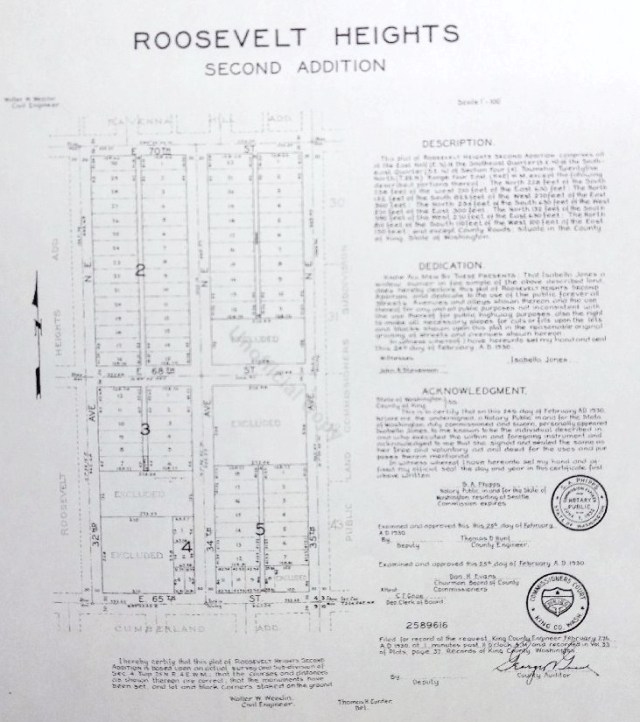
Roosevelt Heights Second Addition plat map files by Isabella Jones in 1930, included land from 32nd to 35th Avenues NE. Blank spaces marked “excluded” were the three charitable organizations who had been given their sites by Marvin Jones.
Roosevelt Heights in the 1920s
With housebuilding in the 1920s Isabella Jones began to transform her former farm property into a neighborhood of urban homes. Property records and the census show that contractors and building trades people were buying lots for houses in the relatively prosperous era of the 1920s. Many of the houses were finely built with Tudor styling and brick fronts. Some examples were:
William F. Ford, a builder, lived at 6807 32nd Ave NE.
Clyde Keeler of 6831 31st Ave NE owned a construction company called Builders Service & Specialties with its office at 55th & Brooklyn.
The Roosevelt Heights neighborhood today
It has been one hundred years since Isabella Jones filed the first Roosevelt Heights plat and began to transform her property into a residential neighborhood. The Seattle City Limits eventually grew out to include Roosevelt Heights.
Today the Roosevelt Heights neighborhood near the Northeast Branch Library is subject to the pressures of density; that is, more houses are being built and they are closer together, like the Bryant Heights project on the former Children’s Home block.
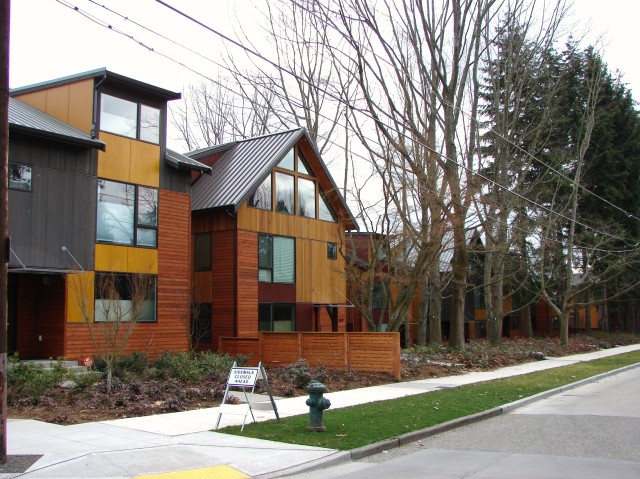
Bryant Heights is a dense development of townhouses on the former Seattle Childrens Home block. Photo by Valarie.
If Marvin Jones were alive today, he would probably find it hard to understand why there is no longer any Ruth School, Children’s Home or Theodora Home on the sites which he donated to them. These organizations evolved in their mission over the past hundred years, consolidated with other organizations and moved away.
Marvin Jones always wanted to do things for community benefit, so if he were alive today, Jones would be glad that his land is now the site of the Northeast Branch Library.
Source list:
HistoryLink essays:
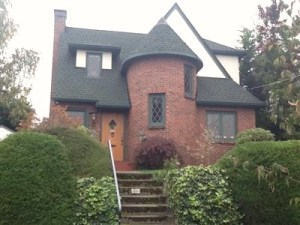
6853 32nd Ave NE, built 1929 in the Roosevelt Heights plat. Many of the fine homes on these streets were occupied by contractors and others in the building trades. Photo by Valarie.
“Burien History,” HistoryLink Essay #10396 by Dotty Decoster, 2013. This essay includes info about the Ruth School, which moved from 3404 NE 68th Street to Burien in 1933.
“City of Seattle Annexes the Town of Ravenna on January 15, 1907,” HistoryLink Essay #3315 by Greg Lange, 2001.
“City of Seattle Annexes Six Towns in 1907,” HistoryLink Essay #1954 by Greg Lange, 2000.
“Gordon S. Clinton (1920-2011),” HistoryLink Essay #10000 by Cassandra Tate, 2012. Clinton served two terms as Mayor of Seattle from 1956 to 1964. When Gordon Clinton was about 15 years old, his father died, and his mother then moved the family into the Theodora Home. This HistoryLink essay’s description of the Theodora tells how this charitable organization functioned as a home for mothers and children during the era when there was no government welfare system or other social safety net. At the Theodora, families lived together. The children would be cared for while mothers found work in the neighborhood such as sewing or housekeeping.
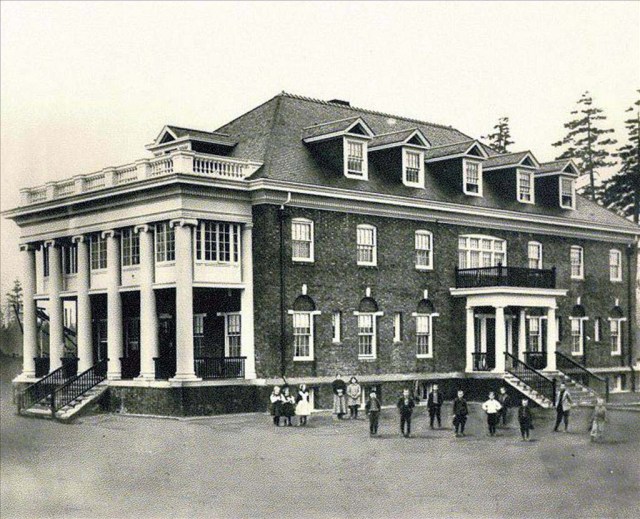
Washington Childrens Home Society opened Brown Hall at 3300 NE 65th Street in 1908. The building was used until 1972 when it was demolished and small cottages were built on the site instead. Photo of 1909 by Asahel Curtis in UW Special Collections, Item #13459.
“Martha Washington School for Girls,” HistoryLink Essay #10556, Seattle School Histories, 2013. This school operated from 1914 to 1921 at 3404 NE 68th Street on the site donated by Marvin F. Jones at the northeast corner of NE 68th Street & 34th Ave NE. The Ruth School for Girls used the site from 1921 to 1933 and then moved to Burien.
“Ravenna-Roosevelt Thumbnail History,” HistoryLink Essay #3502 by David Wilma, 2001.
“Washington Children’s Home Society opens Brown Hall in Seattle in 1908,” HistoryLink Essay #3464 by David Wilma, 2001.
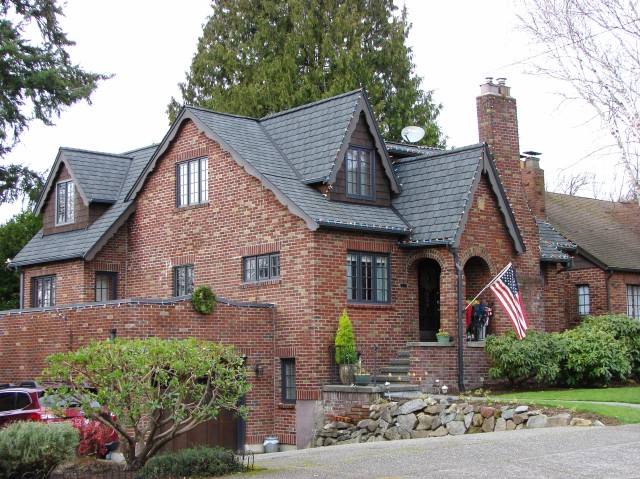
6835 31st Ave NE, built 1928, one of the beautiful brick Tudor style houses along 31st and 32nd Avenues NE. Photo by Valarie.
Other sources:
Modernism 101 essay and biography of Paul Thiry, DoCoMoMo-WeWa website.
Navos: Between 2010 and 2015 both the Ruth Dykeman Children’s Center and the Seattle Children’s Home merged with an organization called Navos.
Northeast Branch Library History Scrapbook on display in the library, on the ledge by the seating area.
Northeast Branch Library Landmark Nomination Report, 2001. City of Seattle Historic Preservation
Theodora: In the year 2015 the Theodora closed. The sponsoring organization, Volunteers of America, consolidated their operations in Snohomish County. The Theodora building was redeveloped into a regular apartment building now called The MOD.

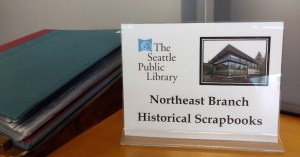
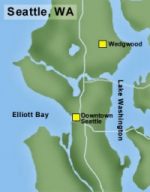
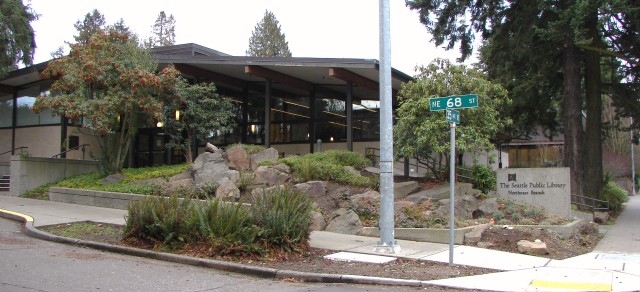
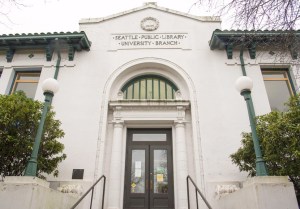
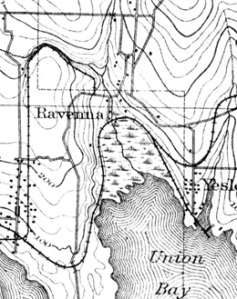
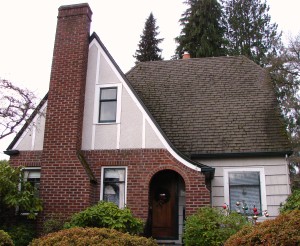
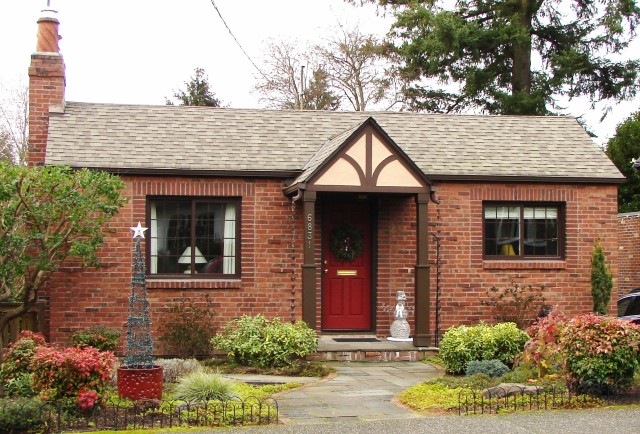
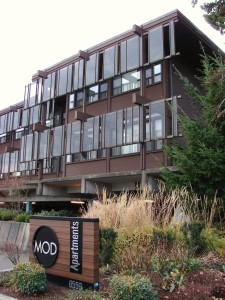
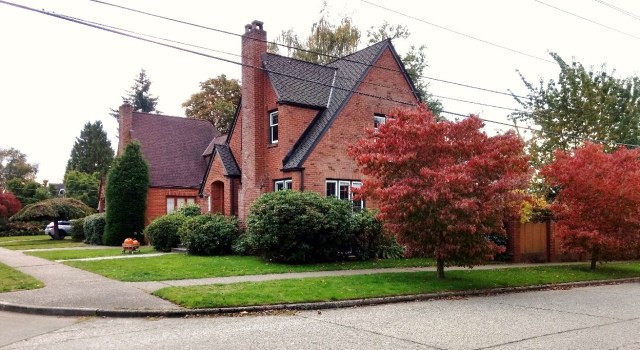
I love some of those 1st “libraries”. A drug store? Or a store? That is somewhere I would never have guessed. Thanks again for your interesting histories of your part of the world.
What I remember best about the new library? The wonderful shallow stairs up to the door, or porch, actually, more like a porch. Haven’t been there since we moved to Spokane. One of my favorite hang-outs as a kid. I was about 9 when it opened.Linda (Owen) Peterson
Yes, the library is as wonderful as ever. The building has been added-on and expanded northward for more shelving and seating, and the childrens area has been enlarged, too. The Northeast Branch has the highest circulation of children’s books of any library in the city.